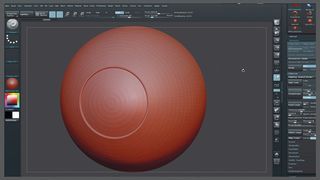Creating stunning and lifelike 3D sculptures requires not only talent but also advanced techniques that can take your work to the next level. Whether you’re a seasoned artist or just starting out in the world of 3D sculpting, these tips will help you elevate your craft and create masterpieces that will leave viewers in awe.
Choose the Right Software
One of the most important aspects of 3D sculpting is choosing the right software for your needs. While there are many options available on the market, some of the most popular choices among professional artists include ZBrush, Blender, and Autodesk Maya. Each of these software programs offers unique tools and features that can help you bring your vision to life in three dimensions.
Practice with Basic Shapes
Before you start creating intricate details and textures, it’s important to master the art of sculpting basic shapes. By practicing with simple forms such as spheres, cubes, and cylinders, you’ll develop a better understanding of volume, proportions, and perspective. This foundation will make it easier for you to tackle more complex projects in the future.
Utilize Reference Images
Reference images can be a valuable tool for any artist, especially when it comes to 3D sculpting. By studying photographs, drawings, and other visual references, you can better understand the anatomy and details of your subject matter. Whether you’re creating a realistic human figure or a fantastical creature, reference images can provide valuable insights that will enhance the quality of your work.
Experiment with Different Brushes
One of the key benefits of 3D sculpting software is the wide range of digital brushes that are available to artists. From standard brushes for sculpting and smoothing to more specialized brushes for adding textures and details, experimenting with different brush types can help you achieve a variety of effects in your sculptures. Don’t be afraid to explore and try new tools to see what works best for your artistic style.
Master the Art of Texturing
Texturing is an essential aspect of 3D sculpting that can bring your creations to life. By adding color, patterns, and materials to your sculptures, you can enhance their realism and visual appeal. Some software programs offer built-in texturing tools, while others allow you to import textures from external sources. Experiment with different techniques to find the best approach for achieving the desired look and feel in your artwork.
Focus on Lighting and Rendering
Proper lighting and rendering can make a world of difference in the final presentation of your 3D sculptures. By understanding the principles of light and shadow, you can create depth, mood, and atmosphere in your artwork. Experiment with different lighting setups and rendering settings to achieve the desired aesthetic for your sculptures. Remember that lighting can greatly impact the overall look and feel of your creations, so take the time to fine-tune these elements for the best results.
Stay Inspired and Keep Learning
As a professional artist, it’s essential to stay inspired and continue learning and growing in your craft. Explore new techniques, attend workshops and classes, and seek feedback from fellow artists to expand your skills and knowledge. By staying curious and open to new ideas, you can push the boundaries of your creativity and create truly remarkable 3D sculptures that showcase your talent and passion.
With these advanced 3D sculpting tips in mind, you’ll be well-equipped to take your artistry to new heights and create breathtaking masterpieces that captivate audiences and inspire fellow artists. Embrace the limitless possibilities of 3D sculpting and unleash your creativity with confidence and skill.
